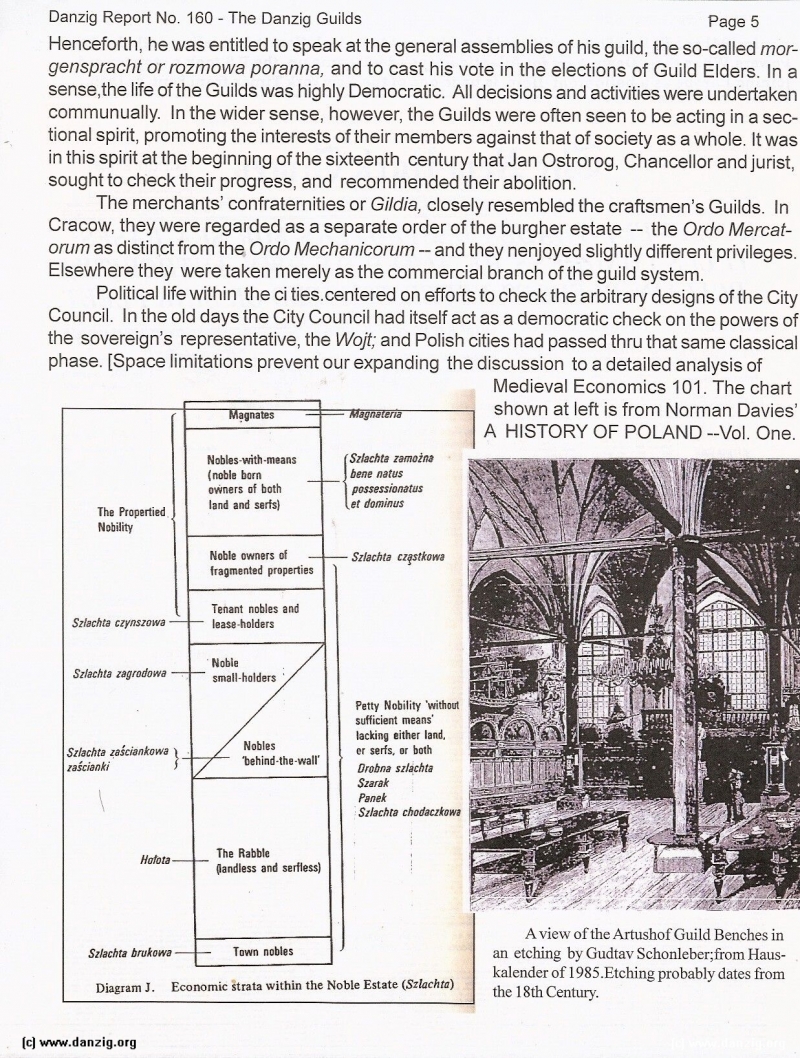
> Guilds of the Artushof; “The Vicissitudes of Urban Life”
Henceforth, he was entitled to speak at the general assemblies of his guild, the so-called morg enspracht orrozmowa poranna, and to cast his vote in the elections of Guild Elders. In a sense, the life of the Guilds was highly Democratic. All decisions and activities were undertaken communually. In the wider sense, however, the Guilds were often seen to be acting in a sectional spirit, promoting the interests of their members against that of society as a whole. It was in this spirit at the beginning of the sixteenth century that Jan Ostrorog, Chancellor and jurist, sought to check their progress, and recommended their abolition.
The merchants’ confraternities or GiIdia, closely resembled the craftsmen’s Guilds. In Cracow, they were regarded as a separate order of the burgher estate -- the Ordo Mercato rum as distinct from the Ordo Mechanicorum -- and they enjoyed slightly different privileges. Elsewhere they were taken merely as the commercial branch of the guild system.
Political life within the cities centered on efforts to check the arbitrary designs of the City Council. In the old days the City Council had itself act as a democratic check on the powers of the sovereign’s representative, the Wojt; and Polish cities had passed thru that same classical phase. Space limitations prevent our expanding the discussion to a detailed analysis of Medieval Economics 101. The chart shown at left is from Norman Davies’ A HISTORY OF POLAND -- Vol. One.
A view of the Artushof Guild Benches in an etching by Gudtav Schonleber, from Hauskalender of 1985. Etching probably dates from the 18th Century.
Danzig Report Nr. 160 - 2nd Quarter 2013, Page 5.
Hits: 3682
Added: 13/08/2015
Copyright: 2025 Danzig.org

